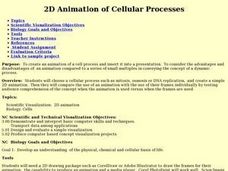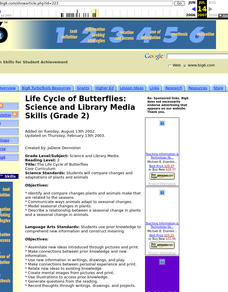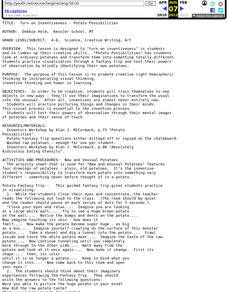Curated OER
Treatment Works!
Students consider the goals of a treatment plan for persons who have had the way they think, feel, or behave changed because of mental illness. PET images are utilized to support the evidence of changes in the activity and functioning of...
Curated OER
Is There a Doctor in the House?
Students research the answers to their own health-related questions, and evaluate the various sources from which this information comes after read "Teenagers Find Health Answers With a Click."
Curated OER
Show 303: New Research into Dyslexia
Pupils explore the causes of dyslexia. They view CT sans and MRIs to view the brain and how it responds. Students read reports about dyslexia. They discuss the nature of dyslexia, its cause, how to diagnose it, and its permanency.
Curated OER
What in the World..?!?
Students photograph mystery images. In this observation skills lesson, students gather everyday objects and place them under a digital microscope. They magnify the image and take a photograph of it. The image is then displayed on the...
Curated OER
Picture an Astronomer
Young scholars create a drawing of what an astronomer looks like. They explore their own assumptions of those who work in the sciences.
Curated OER
2D Animation of Cellular Processes
Students create an animation of a cell process and insert it into a presentation. They choose a cellular process such as mitosis, osmosis or DNA replication, and create a simple 2D animation.
Curated OER
All About Titan and the Huygens Probe
Students examine the characterisitics of Saturn's largest moon, Titan. They discuss what they think is on Titan and what the Huygens probe can tell them about the moon. They write a summary about the information they gathered during...
Curated OER
Life Cycle of Butterflies
Students identify ways plants and animals make changes related to the seasons, specifically focusing on the life cycle of butterflies.
Curated OER
Turn on Inventiveness
Students practice visualization through a fantasy trip and test their powers of observation by blindly identifying their own potatoes.








